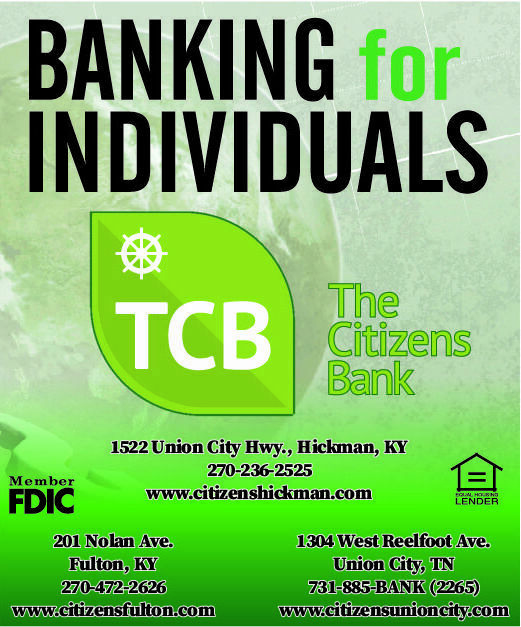The Fulton City Commission approved the first reading of an amendment to ordinance 2017-01 to reflect changes to KRS 100 (HB160) and the regulations to zoning restrictions on qualified manufactured housing on July 14, 2025, a second reading was conducted on July 28, 2025, and was published.
WHEREAS, it is the intent of the City Commission of the City of Fulton, Kentucky to utilize the authority granted in KRS 100.201 through 100.991 an Act relating to planning and zoning and use the authority granted in KRS 100.348.
WHEREAS, it is the intent of the City Commission of the City of Fulton, Kentucky to encourage the accommodation of diverse solutions to the objective of providing for the availability of safe, sustainable and decent housing for all residents.
WHEREAS, it is the intent of KRS 100.348 to recognize and affirm that the protection of property values is a legitimate issue to local governments and the enactment of regulations designed to protect property values is a proper exercise of local government legislative power.
WHEREAS, the City of Fulton Planning Commission after having a public hearing held on June 26, 2025 and subsequent meeting has therefore voted to recommend to the City Commission of the City of Fulton to approve the following changes.
NOW THEREFORE be it ordained by the City Commission of the City of Fulton, Kentucky as follows:
A. QUALIFIED MANUFACTURED HOUSING
KRS 100.348 Compliance.
Notwithstanding any provision of this Zoning Ordinance to the contrary, regulation of Qualified Manufactured Homes in the City of Fulton shall be no more restrictive than permitted under Kentucky House Bill 160 as affecting 2025 by the Kentucky Legislature and the amendments to KRS 100.348 which it effects. The City of Fulton, its Planning Commission, Board of Adjustment, and its Building Official may not adopt or enforce any zoning regulation, ordinance, or other requirement that: (1) excludes qualified Manufactured Homes from any residential zone where single family zones are permitted; (2) discriminates against qualified Manufactured Homes; or (3) imposes foundation requirements on Manufactured Homes that conflict with the structural engineering of the homes, conflict with KRS 227.570, or require more than one type of permanent foundation system.
B. PROPOSAL PROCESS
Step One: Choosing a site for a Qualified Manufactured Home and/or Manufactured Home. A qualified manufactured house may be placed on residential lots. Manufactured housing may be placed on agricultural lots providing one (1) dwelling unit per five (5) acres.
Step Two: Site Selection and design. Once you have selected your site, you should review this document to fully understand the application process and how the compatibility standards relate to your property. These standards as well as the application process will be explained in the following sections of the document.
Step Three: Review. A formal review of the proposals will be in conformance with the process and procedures contained in the Zoning Ordinance.
Step Four: Permits and Application. The applicant will be required to obtain a building permit from the appropriate building official. In addition, application and supplemental materials will be required. The application will include materials such as photographs of surrounding property, site plan, and facade elevation.
C. DESIGN AND APPLICATION SUBMITTAL AND REVIEW PROCESS
INTENT: The purpose of compatibility standards for manufactured housing is to permit local governments to adopt and enforce, as a part of its zoning regulations, compatibility standards governing the placement of qualified manufactured homes in residential zones, within the local government’s jurisdiction.
GUIDELINES: The qualified manufactured home shall be reviewed for its compatibility with architectural appearance and similarity with (1) adjacent development or surrounding developments (i.e. either side of the proposed site within the same block face and adjacent to the rear), (2) development within the same zone or general area, or (3) within a one-eighth (1/8) mile radius or less from the proposed location of the qualified manufactured home.
ARCHITECTURAL COMPATIBILITY GUIDELINES
1. Facades and Exterior Material
Exterior materials shall be material customarily used on site-built dwellings, such as board siding, plywood, or press wood siding, non-glossy vinyl siding, stucco, brick, or non-reflective aluminum.
2. Roof Pitch and Material
Roofing materials shall be of wood, tile or composition shingles, and must have an eave projection of no less than six (6) inches. The roof of each proposed unit shall have a pitch at least equal to the average of the two residential buildings in the same block face (residential buildings on either side of the lot, or two nearest residences, if the adjacent structures are not residential).
3. Windows
Front facing windows must have consistent size, spacing, and proportion to that of the adjacent residences.
4. Porches
Roofed front porches must be included on each structure if more than 50% of the structures in the same block face or within two hundred (200) feet of the structure of the subject site, whichever is less, include them. Porches shall equal the average size and must resemble the same architectural style, roof pitch, foundation and façade material of the existing porches within the existing block face.
5. Foundation
The structure shall be permanently attached to a permanent foundation system and shall be anchored in accordance with the state standards set forth in KRS 227.550 through KRS 227.590.
6. Size/Height
The first-floor elevation of the proposed dwelling shall be no lower than the average floor elevations of the existing adjacent buildings on either side of the infill lot or two nearest residences, if the adjacent structures are non-residential. The building height of the new structure shall be comparable to the building heights within the same block face.
7. Additions/Alterations
Structural additions or alterations shall be subject to the same building code regulations as applying to additions or alterations to a conventionally built house. Any other alteration or conversion of a manufactured house must be performed in accordance with KRS 227.550 et seq., 815 KAR 25:050, Section 2 and 42 USC Chapter 70.
Application Instructions For Qualified Manufactured Housing Compatibility Standards
Introduction:
This set of instructions is for compatibility review approval and is intended to provide brief directions for filing an application. It should not be construed as definitive instructions for your application. These instructions are general in nature and the building official, Board of Zoning Adjustment, Planning Commission and/or Administrative Officer reserve the right to request additional information on any specific application. In addition, no guarantee of success is implied if these instructions are followed, nor is denial if they are not.
Application Procedures
To be an applicant, you must be an owner, lessee or prospective owner with a purchase contract to place a qualified manufactured home on designated residential areas.
Specific Instructions for Completing Application Form:
APPLICANT: Provide the name, address and telephone number of the applicant. The applicant is the owner, lessee, or purchaser under contract for the property. The telephone number should be where the applicant can be reached during normal business hours.
PROPERTY AFFECTED: Provide address for the property to be reviewed. If the property is a newly created lot, an address will be assigned at the time of the building permit.
SUBMISSIONS: The specific submission requirements may vary from application to application. Below are the guidelines for the minimum requirements.
Site Plan: A site map should be submitted. This map should be drawn to scale and preferably submitted on an 8 ½” x 11” sheet, but in no case exceed 11” x 17”. The plan should show the property lines, building footprints, building setbacks and significant site features such as fences, sidewalks, driveways, accessory buildings, and trees.
Building Elevations: All applications involving compatibility standards to the exterior of the building shall provide an elevation drawing. The drawing must be to scale and should not exceed 11” x 17” in size. The drawing should be produced for every façade that will change, no matter how slight the change.
The façade elevations should show the proposed changes or designs. Each change or new element should be clearly identified on the elevations. All new materials should be clearly identified.
Photographs: All applications must be accompanied by photographs. You may provide black and white or color photographs, at least 3 ½“ x 5” in size, or provide digital photography in a form acceptable to the Administrative Officer.
Provide photos clearly detailing general views of properties immediately adjacent to the project site. The photos may be taken from public spaces such as the sidewalk and streets. If a camera is not available for use, the applicant may use the Property Valuation cards provided in the P.V.A. office.
Specifications: Provide specifications for the construction or the materials to be added to the project on a separate sheet if they cannot be included in façade elevation.
Examples of compatibility based on Architectural Design including Roof Pitch, Building Height, Location of Entry, Porches and Exterior Finishes.
That this Ordinance shall be put before the Commission and shall be effective upon its second reading, adoption and publication as required by law.
 Loading...
Loading...
.png)

